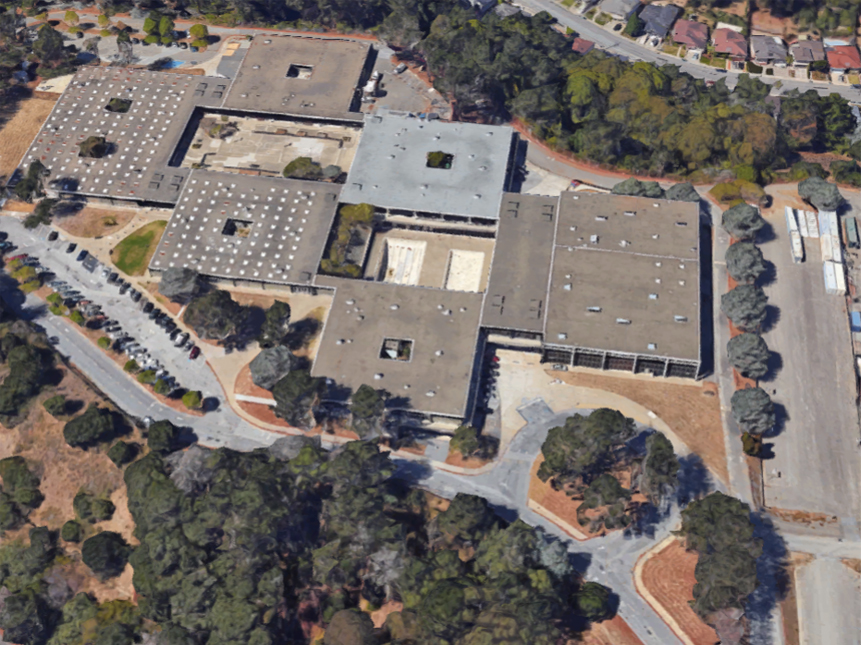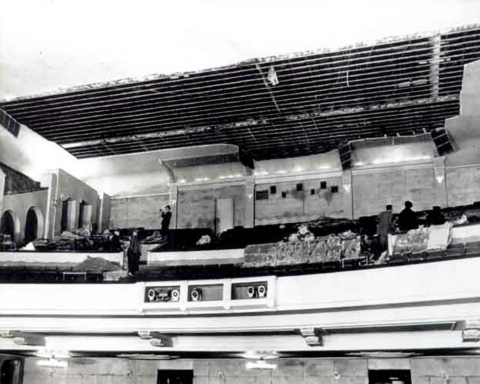It is not difficult to understand why the San Mateo Union High School District trustees are exploring the possible sale of the Crestmoor High School site atop a windy hill in San Bruno.
The potential cash payout from the sale of 40 acres of land (pictured in part above) available for residential development is an understandable temptation in an overheated real estate market that is likely to get even hotter with the wave of IPOs expected this year.
But those who have watched other school districts dispose of surplus property will tell you the same thing I would: Don’t sell the property. Find some way to make it work, build teacher housing, but hold onto the land. As Will Rogers once said, “All my money’s in land ’cause they ain’t makin’ any more of it.”
This is not just the urgent plea from a Crestmoor graduate (Class of 1969 – Go Falcons), but a practical point of advocacy.
I can assure you that the folks who sold the San Carlos High School site in the 1970s wish they hadn’t. And some former Palo Alto officials will admit that selling off the Cubberley High site was one of the worst decisions they made.
At the time those decisions were made, no one had any idea what was going to happen to the real estate market on the Peninsula.
The SMUHSD trustees have the benefit of experience. It seems like a pretty straightforward reality. Once the land is gone, it’s gone. If they hold onto it, it is an asset that will only grow in value and potential revenue.
WHERE THE LIVING IS EASY: Apparently, San Carlos Councilman Ron Collins was surprised to read here that he wasn’t going to run for a third term. He told Political Climate that he has been deciding whether to retire from his insurance business or from the council and he still hasn’t decided. His musings — “At first, I was thinking of not running,” he said — seem to have sent the rumor mill into full spin. But, he said, “I enjoy the council stuff more than I enjoy my insurance business,” which certainly sounds like someone who is going to run. Maybe we ought to just wait until he decides.
THE DISTRICT SHUFFLE: As the Redwood City Council nears the finish line of what has turned into a marathon effort to draw new racially reflective districts, one consistent question keeps coming up: Why was this so difficult?
Drawing district lines is so old that the term for manipulating them – Gerrymandering – is more than 200 years old.
The source of the difficulty is evident — most of the council, not all, turned the process into a political one in which the principle objectives seemed to include protecting incumbents and providing help to friends and allies who might want to run under the new system.
Some council members described the districting process as having a steep learning curve, but that still doesn’t explain why the council opened up the map-drawing process so substantially to the public, essentially inviting candidates and their supporters to lobby for their own political purposes. In essence, they are giving equal weight to maps drawn by residents as those drawn by the districting expert hired by the city. Indeed, the expert and city staff have been directed to”fix” any issues that may have rendered resident maps void.
Districting can be a non-political process. Allow the public to have input on the criteria, but name an independent citizens’ commission to draw the final lines and have the council act only to approve the new districts. It’s an object lesson for the other cities that will have to do this in the near future.
Contact Mark Simon at mark.simon24@yahoo.com.
*The opinions expressed in this column are the author’s own and do not necessarily reflect the views of Climate Online.






